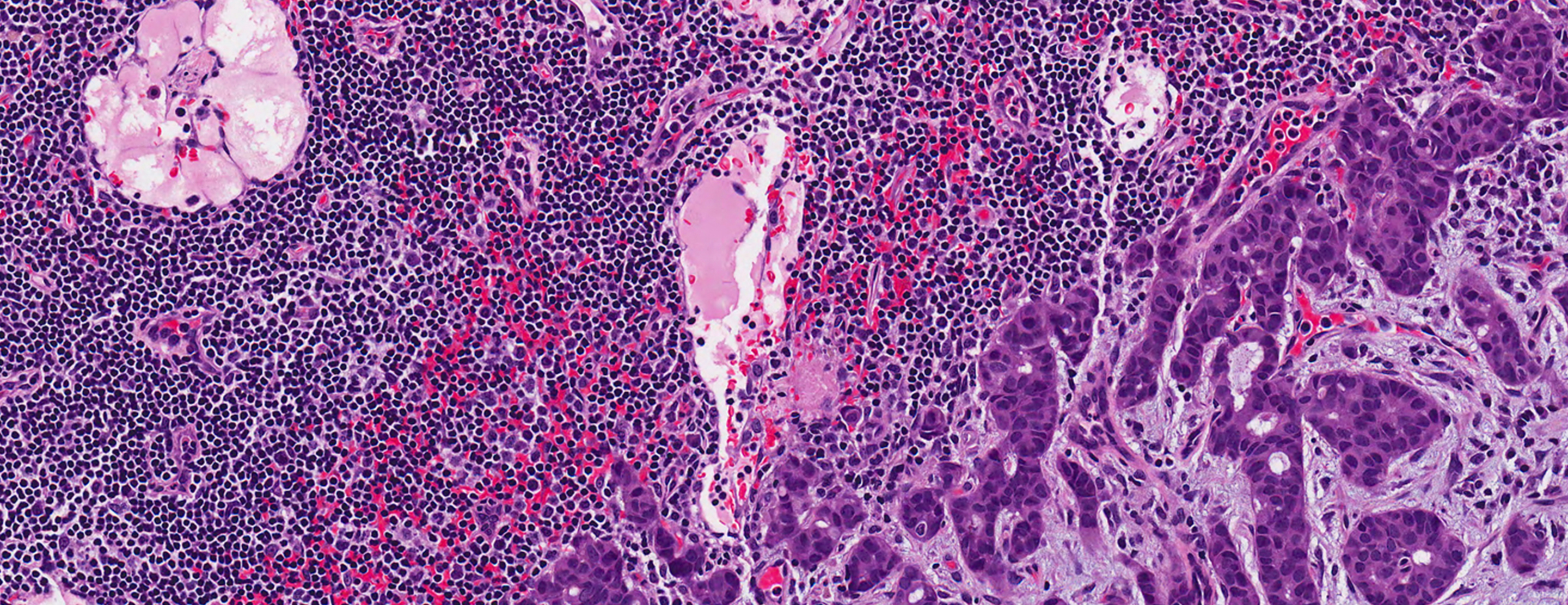
Breast biopsy - stereotactic
Definition
A breast biopsy is the removal of breast tissue to examine it for signs of
There are several types of breast biopsies, including stereotactic,
Alternative Names
Biopsy - breast - stereotactic; Core needle breast biopsy - stereotactic; Stereotactic breast biopsy; Abnormal mammogram - stereotactic breast biopsy; Breast cancer - stereotactic breast biopsy
How the Test is Performed
You are asked to undress from the waist up. During the biopsy, you are awake.
You are most likely asked to lie facing down on the biopsy table. The breast that is being biopsied hangs through an opening in the table. The table is raised and the doctor performs the biopsy from underneath. In some cases, stereotactic breast biopsy is done while you sit in an upright position.
The biopsy is done in the following way:
- The health care provider first cleans the area on your breast. Numbing medicine is injected.
- The breast is pressed down to hold it in position during the procedure. You need to hold still while the biopsy is being done.
- The doctor makes a very small cut on your breast over the area that needs to be biopsied.
- Using a special machine, a needle or sheath is guided to the exact location of the abnormal area. Several samples of breast tissue are taken.
- A small metal clip may be placed into the breast in the biopsy area. The clip marks it for surgical biopsy later, if needed.
The biopsy itself is done using one of the following:
- Hollow needle (called a core needle)
- Vacuum-powered device
- Both a needle and vacuum-powered device
The procedure usually takes about 1 hour. This includes the time it takes for the x-rays. The actual biopsy takes only several minutes.
After the tissue sample has been taken, the needle is removed. Ice and pressure are applied to the site to stop any bleeding. A bandage will be applied to absorb any fluid. Stitches are not needed. Adhesive strips may be placed over any wound, if needed.
How to Prepare for the Test
The provider will ask about your medical history. A breast exam may be done.
If you take medicines (including aspirin, supplements, or herbs), ask your doctor whether you need to stop taking these before the biopsy.
Tell your doctor if you may be pregnant.
DO NOT use lotion, perfume, powder, or deodorant underneath your arms or on your breasts.
How the Test will Feel
When the numbing medicine is injected, it may sting a bit.
During the procedure, you may feel slight discomfort or light pressure.
Lying on your stomach for up to 1 hour may be uncomfortable. Using cushions or pillows may help. Some people are given a pill to help relax them before the procedure.
After the test, the breast may be sore and tender for several days. Follow instructions on what activities you can do, how to care for your breast, and what medicines you can take for pain.
Why the Test is Performed
Stereotactic breast biopsy is used when a small growth or an area of
The tissue samples are sent to a pathologist to be examined.
Normal Results
A normal result means there is no sign of cancer.
Your provider will let you know when you need a follow-up mammogram or other tests.
What Abnormal Results Mean
If the biopsy shows benign breast tissue without cancer, you will likely not need surgery.
Sometimes the biopsy results show abnormal signs that are not cancer. In this case, a surgical biopsy might be recommended to remove the whole abnormal area for examination.
Biopsy results may show conditions such as:
- Atypical ductal hyperplasia
- Atypical lobular hyperplasia
Intraductal papilloma - Flat epithelial atypia
- Radial scar
- Lobular carcinoma-in-situ
Abnormal results may mean that you have breast cancer. Two main types of breast cancer may be found:
- Ductal carcinoma starts in the tubes (ducts) that move milk from the breast to the nipple. Most breast cancers are of this type.
- Lobular carcinoma starts in parts of the breast called lobules, which produce milk.
Depending on the biopsy results, you may need further surgery or treatment.
Your provider will discuss the meaning of the biopsy results with you.
Risks
There is a slight chance of infection at the injection or surgical cut site.
Bruising is common, but excessive bleeding is rare.
References
American College of Radiology website. ACR practice parameter for the performance of stereotactic-guided breast interventional procedures.
Henry NL, Shah PD, Haider I, Freer PE, Jagsi R, Sabel MS. Cancer of the breast. In: Niederhuber JE, Armitage JO, Kastan MB, Doroshow JH, Tepper JE, eds. Abeloff's Clinical Oncology. 6th ed. Philadelphia, PA: Elsevier; 2020:chap 88.
Parker C, Umphrey H, Bland K. The role of stereotactic breast biopsy in the management of breast disease. In: Cameron JL, Cameron AM, eds. Current Surgical Therapy. 12th ed. Philadelphia, PA: Elsevier; 2017:666-671.
Review Date: 03/12/2019
The information provided herein should not be used during any medical emergency or for the diagnosis or treatment of any medical condition. A licensed physician should be consulted for diagnosis and treatment of any and all medical conditions. Call 911 for all medical emergencies. Links to other sites are provided for information only -- they do not constitute endorsements of those other sites. Copyright ©2019 A.D.A.M., Inc., as modified by University of California San Francisco. Any duplication or distribution of the information contained herein is strictly prohibited.
Information developed by A.D.A.M., Inc. regarding tests and test results may not directly correspond with information provided by UCSF Health. Please discuss with your doctor any questions or concerns you may have.





